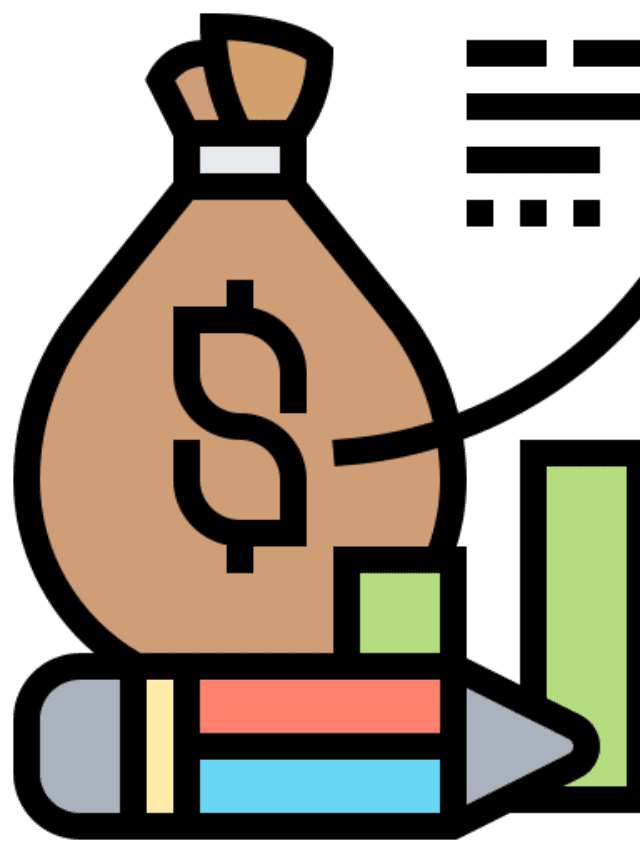Understanding Student Loans
Student loans are financial instruments designed to help individuals pay for their college education and other associated expenses. They enable students to pursue higher education despite financial barriers. Broadly, there are two distinct categories of student loans: federal student loans and private student loans. Federal student loans are funded by the government, with terms and benefits that often favor borrowers, such as flexible repayment plans and the possibility of loan forgiveness. Conversely, private student loans are offered by banks and financial institutions, generally featuring variable terms that may include higher interest rates and less favorable repayment options.
When considering student loans, it is crucial to understand how interest accrues. Interest on student loans typically starts to accumulate as soon as the funds are disbursed. For federal loans, there are subsidized options that do not accrue interest while the student is enrolled at least half-time, whereas unsubsidized loans begin accruing interest immediately. This distinction is vital as it affects the total amount a borrower will repay over the life of the loan.
The impact of student loans on a graduate’s financial future is significant. Not only do student loans affect one’s credit score, but they can also influence future financial decisions, such as purchasing a home or investing in retirement. Graduates may find themselves in a challenging position if they have taken on substantial debt, necessitating a sound understanding of the repayment process. Options such as student loans forbearance allow borrowers to temporarily pause their payments under certain circumstances. This feature can provide much-needed relief, particularly for those facing financial hardships. However, students must carefully navigate their choices within the student loans department of education to ensure they are making informed decisions related to their financial responsibilities.
The Importance of a Repayment Plan
Establishing a robust student loan repayment plan is essential for graduates entering the workforce. A well-structured repayment strategy not only facilitates timely payments but also plays a significant role in preventing default on student loans. Defaulting can have dire consequences, including damaged credit scores and increased financial burden. Therefore, graduates should prioritize formulating an effective repayment plan immediately after graduation.
A repayment plan tailored to individual financial situations helps graduates maintain manageable monthly payments, significantly reducing the risk of default. Moreover, consistently making on-time payments can have a positive impact on one’s credit score, opening doors for future opportunities such as home ownership, car loans, and other financial commitments. This aspect underscores the importance of being proactive in managing one’s student loans.
In addition to avoiding default and improving credit scores, an effective repayment plan can lower the overall costs associated with student loans. Graduates can save substantial amounts in interest by selecting the optimal repayment strategy. For example, some may choose income-driven repayment plans, while others might consider loan consolidation or refinancing options that better suit their financial landscape. It’s imperative to assess factors such as income level, job stability, and living expenses when deciding on the right approach.
When navigating the student loans department of education’s offerings, it is important to remain informed about the various forbearance options available for students experiencing financial hardship. Forbearance on student loans can temporarily reduce or suspend payments but should be considered carefully, as it can lead to increased interest costs over time. Ultimately, a comprehensive understanding of available repayment strategies and options like forbearance student loan is key to making informed decisions. By developing a repayment plan that considers one’s circumstances, graduates can ensure both financial stability and success in managing their student loans effectively.
Types of Repayment Plans
When it comes to student loan repayment, understanding the various repayment plans is essential for borrowers seeking the most suitable option for their financial circumstances. The Department of Education offers several distinct repayment plans that can meet individual needs. Among these options, the Standard Repayment Plan is often favored for its simplicity. It entails fixed payments over a ten-year period, typically allowing borrowers to pay less interest over time. However, this plan may be challenging for those with lower incomes, as the monthly payments are constant and not adjusted for financial circumstances.
Another prevalent option is the Graduated Repayment Plan. This plan begins with lower payments that gradually increase every two years, designed to accommodate borrowers who anticipate a rise in their income over time. While this provides immediate relief, borrowers should be wary that overall interest may accumulate more than with the standard plan, potentially leading to higher overall costs.
Extended Repayment Plans are also available, allowing borrowers to stretch payments over up to 25 years. This option reduces monthly payments significantly, which can ease short-term financial burdens; however, it often results in a greater total interest expenditure across the life of the loan.
A popular choice among those who find it difficult to manage fixed payments is the Income-Driven Repayment Plan. This plan adjusts monthly payments based on the borrower’s income and family size, potentially leading to lower payments in financial hardships. Additionally, any remaining balance may be forgiven after 20 to 25 years, depending on the plan chosen. While these plans have substantial benefits, they can also prolong the loan period, which may lead to higher total interest costs.
Understanding these various types of repayment options is crucial when navigating student loans forbearance, as this knowledge will empower borrowers to make informed decisions regarding their financial future.
Managing Interest Rates and Fees
Understanding the interest rates linked with student loans is crucial for effective student loan repayment. Interest rates can vary based on federal or private loan sources, creditworthiness, and the type of loan, such as fixed or variable rates. For example, federal student loans often have fixed rates determined annually by legislation, while private loan rates can fluctuate based on market conditions or the borrower’s credit profile.
The long-term implications of these interest rates can significantly impact the overall cost of borrowing. High interest rates can lead to substantial payments over the life of the loan, making it critical for borrowers to be proactive in managing these costs. One effective approach is making payments while still in school or during the **forbearance** period, which allows borrowers to lower the interest accumulation before entering full repayment. Many borrowers may also qualify for **forbearance student loans**, which allow deferment during financial hardship, but this can lead to additional interest if accrued during this period.
To alleviate the burden of high interest rates and fees, several strategies can be employed. Loan consolidation is one such option that allows borrowers to combine multiple loans into one, potentially securing a lower interest rate. This simplifies the repayment process and could lead to reduced monthly payments. Additionally, refinancing student loans can significantly lower interest rates for those with improved credit scores since the initial loan was taken out. However, it’s important to weigh the pros and cons, as refinancing federal loans into private loans would result in the loss of certain benefits, such as deferment or **forbearance** options provided by the **student loans department of education**.
Being informed about managing interest rates and fees is essential for borrowers aiming for a smooth **student loan repayment** journey. Careful planning and seeking expert advice can prove beneficial in navigating these financial obligations effectively.
Strategies for Repayment
Managing student loan repayment can often feel overwhelming, but with a few practical strategies in place, borrowers can take control of their financial future. Firstly, effective budgeting is crucial. Assessing your monthly income and expenses will enable you to allocate funds specifically for your student loans. A well-structured budget allows you to identify areas where you can cut back. For example, scrutinizing discretionary spending can free up additional funds for loan payments.
Making extra payments when possible is another effective strategy to tackle student loans. Even small amounts can significantly reduce the total interest paid over time. It is advantageous to prioritize loans with the highest interest rates, as these can accumulate debt more quickly. Forbearance options such as student loans forbearance are available through the Department of Education, but relying on this should be a temporary solution due to accruing interest during this period.
Using windfalls, such as tax refunds or bonuses, can also be a smart way to diminish the principal on student loans. Redirecting these funds directly toward your loans can shorten the repayment period and lessen your interest burden. Moreover, maintaining open communication with your loan servicer is essential. Regular check-ins regarding your loan status, available repayment options, and any potential forbearance student loan options should be conducted to stay informed about your repayment journey. This proactive approach allows you to explore all avenues, including income-driven repayment plans or any recent updates on student loan policies.
Ultimately, having a clear repayment strategy tailored to personal financial situations can empower borrowers to effectively manage their student loan repayment, paving the way toward financial freedom.
Alternatives to Standard Repayment
Standard repayment for student loans may not always be the most suitable option for every borrower. Many individuals face varying degrees of financial hardship, leading them to explore alternative repayment methods. Among these alternatives are loan forgiveness programs, deferment, and forbearance options, each providing unique benefits tailored to specific circumstances.
Loan forgiveness programs offer a viable pathway for borrowers, especially those in public service careers. The Public Service Loan Forgiveness (PSLF) program, for instance, forgives federal student loans after 120 qualifying payments under a qualifying repayment plan while working full-time for a qualifying employer. Eligibility for such programs often requires adherence to specific criteria, including the type of loans, employment status, and payment plans utilized. This option can significantly alleviate the financial burden for professionals committed to serving their communities.
Deferment is another alternative, allowing borrowers to temporarily postpone their loan payments without accruing interest on certain types of federal loans. This option is particularly beneficial for individuals who are experiencing financial difficulties, such as unemployment or significant medical expenses. To qualify for deferment, borrowers must meet specific criteria laid out by the student loans department of education, thereby providing them with some breathing room during difficult times.
On the other hand, forbearance provides a short-term solution for borrowers unable to make their monthly payments. This option allows for the suspension or reduction of payments for a limited time, although interest continues to accrue on the loans. Borrowers can apply for forbearance student loans under various circumstances, including temporary financial setbacks. It is imperative that borrowers understand the implications of forbearance, as it can lead to increased overall debt if not managed properly.
In conclusion, exploring these alternatives to standard repayment can be crucial for those facing financial challenges. Understanding loan forgiveness options, deferment, and forbearance can provide relief and assist borrowers in managing their student loan repayment effectively.
Dealing with Default and Late Payments
Defaulting on student loans can have serious consequences that reach far beyond immediate financial distress. When borrowers fail to make timely payments, their loan accounts may enter default status, typically after 270 days of non-payment. This situation can result in damaged credit, wage garnishment, and the government withholding tax refunds. Therefore, ensuring timely payments on student loans is crucial to maintaining a healthy financial future.
For borrowers facing difficulties, understanding how to manage defaulted loans can prove beneficial. First and foremost, it is essential that individuals communicate with the student loans department of education or their loan servicer as soon as they anticipate trouble meeting payment deadlines. Open lines of communication can often lead to solutions that help prevent default from occurring. Forbearance is one option available, allowing borrowers a temporary pause on their payments without negatively impacting their credit scores.
If a loan has already defaulted, borrowers can rehabilitate their student loans by making a series of agreed-upon payments based on their income. This income-driven repayment plan encourages borrowers to return to good standing and reconnect with their lenders. Additionally, borrowers may qualify for consolidation options, which involve combining multiple loans into a single loan, often with more favorable terms.
Furthermore, staying informed about available options like student loans forbearance can help prevent future hardships. Ultimately, addressing late payments should be treated as a priority. Navigating the complexities of student loan repayment may seem daunting; however, utilizing resources and solutions available through lenders and educational departments can lead to effective management of financial obligations. In conclusion, maintaining regular payments and proactively addressing challenges can help ensure a smoother repayment journey.
Tax Implications and Benefits
Understanding the tax implications associated with student loan repayment is crucial for borrowers navigating their financial obligations. One of the significant benefits available to individuals repaying their loans is the student loan interest deduction, which can provide meaningful tax relief. Under current legislation, qualified taxpayers can deduct up to $2,500 of interest paid on their student loans each year, effectively reducing their taxable income and potentially lowering their overall tax liability.
To qualify for this deduction, the borrower must meet certain criteria, including income limitations. The deduction begins to phase out for single filers with a modified adjusted gross income (MAGI) above $70,000 and is completely eliminated for those earning over $85,000. For married couples filing jointly, the phase-out range is between $140,000 and $170,000. Therefore, it is essential for borrowers to track their incomes and adjust their financial planning accordingly. The student loans department of education often emphasizes these deductions as a way for borrowers to manage their loan repayment more effectively.
Moreover, changes in tax law can significantly influence the repayment landscape. For example, potential reforms may introduce new credits or modify existing deductions, which could enhance the financial outlook for both current borrowers and those seeking forbearance student loans. Those facing temporary financial hardships might consider forbearance student loan programs, which allow borrowers to pause payments without entering into default. However, it is important to note that interest generally continues to accrue during forbearance, which may have unintended tax implications in the long run.
In conclusion, awareness of tax implications and benefits related to student loan repayment, including available deductions and credits, is essential for borrowers. Staying informed of legislative changes may help borrowers make strategic decisions about their repayment plans and overall financial health.
Resources and Support for Borrowers
Managing student loans can be a daunting task for many borrowers, but fortunately, a variety of resources and support systems are available to assist in navigating the complexities of student loan repayment. Understanding these resources can help ease the burden of debt and provide clarity regarding repayment options.
One of the primary resources is the student loans department of education, which offers a wealth of information on federal student loans, repayment plans, and other essential topics. Their official website provides access to tools like the Loan Simulator, which allows borrowers to explore different repayment scenarios based on their personal financial situation. Additionally, borrowers can find guidance on applying for forbearance student loans or deferment options if they face temporary financial difficulties.
Moreover, financial aid offices at educational institutions play a vital role in helping students and alumni manage their student loans. These offices offer personalized advice, address inquiries regarding student loan repayment, and assist with the complexities of loan types, including direct loans and federal family education loans.
In addition, nonprofit credit counseling services can provide borrowers with free or low-cost counseling to help them create a budget and develop a repayment plan. These organizations often offer workshops on financial literacy, improving credit scores, and understanding the long-term implications of student loans forbearance.
Lastly, numerous online resources and forums allow borrowers to connect with others facing similar challenges. Websites dedicated to financial advice often provide reviews and insights on various student loan repayment strategies. By leveraging these valuable resources, borrowers can better equip themselves to manage their student loans and explore all available options effectively.
Share this with your friends and family!

























